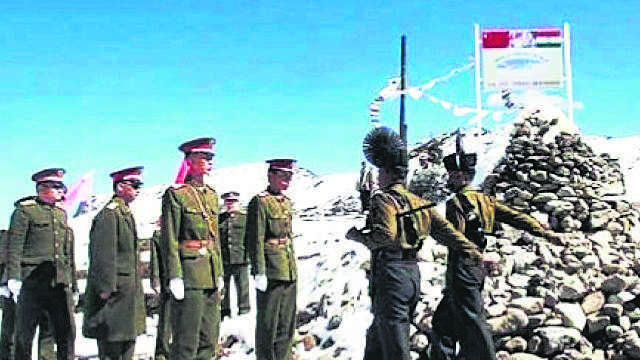
Ajay Banerjee
Tribune News Service
New Delhi, August 7
China’s reaction to Ladakh becoming a Union Territory seems to be stemmed from the un-demarcated 823-km frontier. In reality, there are only two spots along the Line of Actual Control (LAC) recognised as disputed by India and China.
Another half-a-dozen spots along the LAC have troops patrolling as per their perception of the LAC, however, not a bullet has been fired since November 1962 in Ladakh. The difference in ‘perception’ is between 2 and 20 km at various points, hence the dispute.
“The reaction of Beijing was to make an on-record diplomatic protest as Aksai Chin, the north-eastern corner of now bifurcated state of J&K, is claimed by India even as China is in illegal custody,” said a senior functionary in the know of matters related to China.
China characterised the move as “unacceptable” and asked New Delhi to avoid actions that unilaterally change the status quo.
In Delhi, observers in the South Block point out there are only two disputed areas along the LAC. One is at Trig Heights located in the north-eastern edge of Ladakh and the other is Demchok, the south-eastern edge. Besides, tensions brew occasionally as both sides carry out patrolling along the northern edge of Pangong Tso (lake), Sppangur Gap, Kongka La, Chumur, Mount Sajun and Samar Lung pa. All these matters are being dealt at the level of the Special Representatives for boundary talks.
In 2016, the two countries carried out their first-ever joint military exercise at a tactical level in Ladakh. In September 2014, Prime Minister Narendra Modi, after a meeting with Chinese President Xi Jinping, proposed the LAC demarcation on ground to end the dispute.
Historically, the frontier of Ladakh with Tibet has never been demarcated. The British took control of J&K in 1846 after defeating the Sikh Army. The British proposed boundaries — five separate ones in 1846, 1865, 1873, 1899 and 1914, China rejected each of them.
Major Alexandar Cunnigham, who was part of the British attempt in 1846 to demarcate the boundary, details this in his 1854 published book ‘Ladak Physical, Statistical and Geographical’. He narrates “The settlement of this boundary (between Ladakh and Tibet) was one of some importance”.
The existing LAC partially adheres to the 1873 British ‘foreign office line’ and is considered the most realistic on the internationally accepted principle that the water shed will decide the boundary. India’s point is the LAC lies along the alignment where its troops were in 1962 before the war commenced
